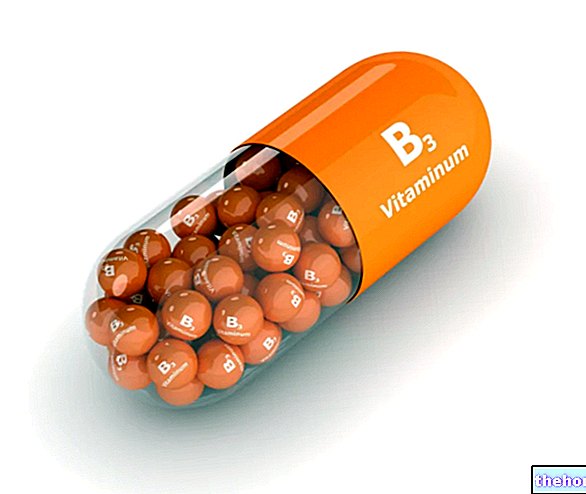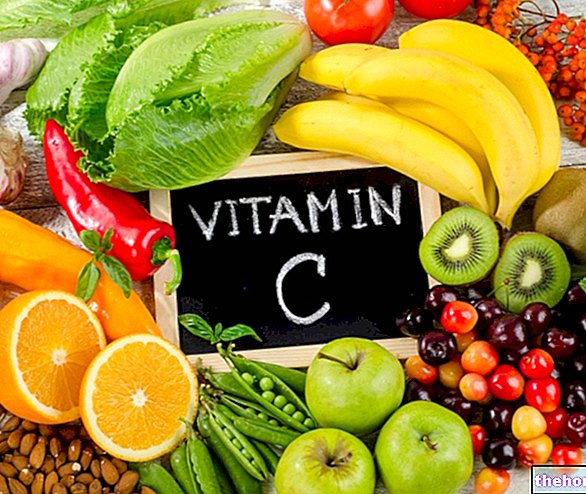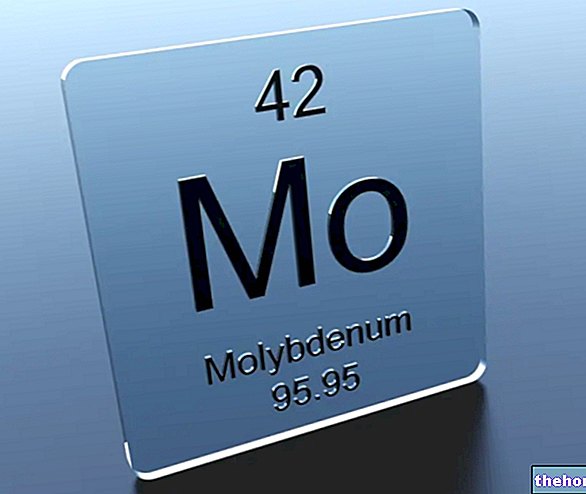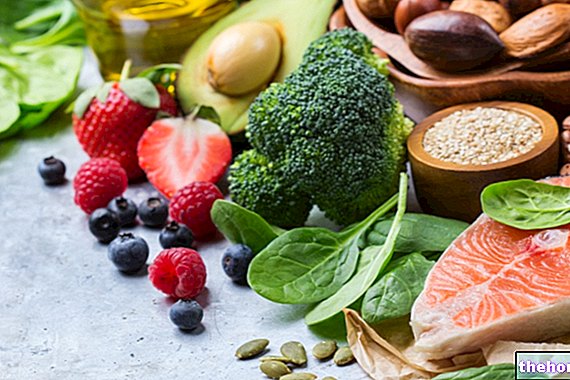
It is essential for: epithelial cells, bone and tooth growth, normal sexual maturation in adolescents and fertility in adults; increases resistance to infections by supporting the immune system, ensures good vision and allows for twilight vision, protects the skin from damage caused by sun exposure and has a powerful antioxidant effect - it fights free radicals, counteracts the harmful effects caused by pollution and smoking - and seems to exert a protective role on prostate cancer.
Retinol is taken regularly with food and comes mainly from nutritional sources of animal origin; however, it can be synthesized in the intestine starting from β carotene (beta-carotene), a precursor / provitamin of mainly vegetable origin (yellow-orange dye), belonging to the vast group of carotenoids (over 600 types). This process takes place thanks to an enzyme which, for each molecule of β carotene taken into processing, obtains two units of vitamin A.
Vitamin A is stored in the body inside the liver, ensuring the proper functioning of the body for up to one or two years - in a healthy and well-fed person.
Foods rich in beta-carotene are mainly yellow, orange and red vegetables, carrots, pumpkin, apricots, sweet potatoes, melons, but also dark green leafy vegetables (spinach, broccoli, chicory, chard, etc.). Retinol, on the other hand, is found above all in the liver, in egg yolk (where carotenoids are also present), in crustaceans, whole milk, butter and cheese.
Excess retinol is more harmful than β carotene - of which overdosing has minimal effects. Mega doses of vitamin A in pregnancy can have a teratogenic effect.
It is recommended to take at least 1,000 IU (international units) per day (day) of retinol and equivalent for the sedentary individual, while for the athlete, during gestation and breastfeeding it is advisable to increase these doses.
In Italy, considering the quality of nutrition albeit with its territorial variability, the daily requirement of vitamin A is always guaranteed and currently there are no cases of deficiency.
Let's go into more detail.
. It is a higher alcohol, found in nature mainly in esterified form, the structure of which was discovered by Karrer in 1931. It consists of a β-iononic ring and a side chain containing a series of conjugated double bonds. The biologically active forms of vitamin A are:- Retinol
- Retinaldehyde
- Retinoic acid.
Retinol as such is found in foods of animal origin, while its precursors carotenoids are found in those of plant origin.
Currently identified carotenoids are about 600, those with provitaminic activity are: α-, β-, γ-carotene and β-cryptoxanthin.
Other carotenoids present in the diet, but without provitaminic activity, are: lycopene, zeaxanthin, lutein and canthaxanthin.
At the level of the intestinal mucosa, most of the carotenes are transformed, by the action of a 15,15 "-carotene-dioxygenase, into retinaldehyde, which can then be reduced to retinol. Theoretically, two of each molecule of β-carotene can be formed. of retinol, in practice no more than 1/3 is absorbed and less than half is used, so from one μg of β-carotene we will have 0.167 μg of retinol (1/6).
and enteric retinyl ester hydrolases.
No more than 75% of ingested retinol is absorbed by facilitated diffusion (at physiological concentrations) and by passive diffusion (at high concentrations). The process is influenced by both the quantity and quality of dietary lipids. In addition to the presence of bile acids.
In the enterocytes (cells of the intestine) the retinol is esterified and becomes part of the chylomicrons, which through the lymphatic circulation reach the blood circulation and go to the liver, which contains from 50% to 80% of the organism's retinol.
Hepatic retinol can be released into the bloodstream, where it is transported as retinol-BP associated with transthyretin (prealbumin) to the tissues; the blood concentration of retinol is equal to 40 ÷ 80 μg / 100ml.
(retinol)Vitamin A also performs other functions that are not fully understood, probably in the form of retinoic acid:
- Deficient animals exhibit adrenal insufficiency and reduced glycogen formation
- It is needed in the mucous tissue for the synthesis of mucopolysaccharides
- It plays an important role in the preservation of cell membranes (antioxidant function: it fights free radicals, and for this reason it is an ingredient in the most effective anti-wrinkle creams, counteracts the harmful effects of smoking and pollution as well as providing a valid help in fighting the " skin aging), in protein synthesis and in the formation of bones and skeleton.
High doses of retinol (6 ÷ 12 mg) for years cause the onset of a chronic syndrome with: hair loss, loss of appetite, anemia, muscle pain and neurological symptoms.
High doses of carotenoids cause an alteration of the pigmentation of the skin (yellow-orange color).
, offal, some fish, eggs, milk, cheese, butter.Carotenoids are found in foods of plant origin and in particular:
- In orange-yellow vegetables such as carrots, pumpkins, peppers;
- In green leafy vegetables such as spinach and broccoli;
- In some fruits, such as apricots, melons, yellow peaches, pink grapefruit and papaya.
However, carotenoids are also present in foods of animal origin such as eggs and milk and derivatives.
For further information: Foods with Vitamin A.In recent years, a new conversion index has taken hold, the RAE (retinol equivalent activity), preferred because it correlates better with the human capacity for absorption and conversion of carotenoids into vitamin A.
1 µg RAE = 1 µg retinol = 2 µg all-trans-β-carotene from supplements = 12 µg of all-trans-β-carotene from food = 24 µg α-carotene or β-cryptoxanthin from food.




























